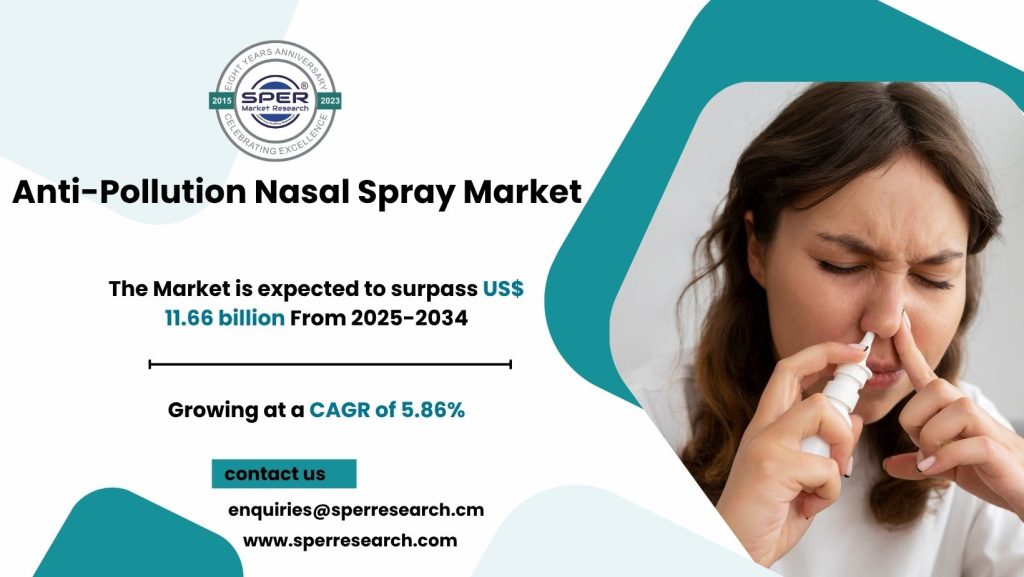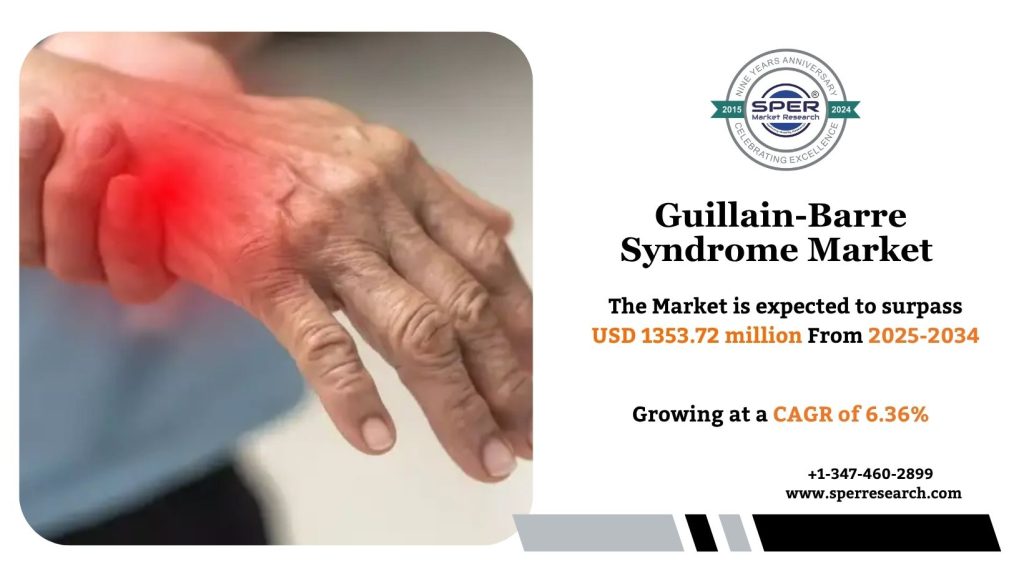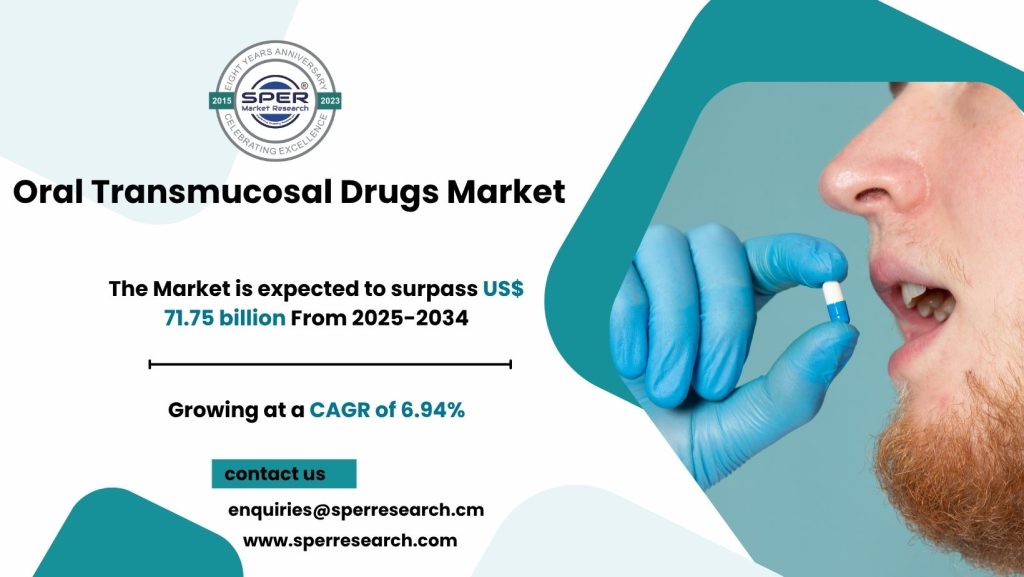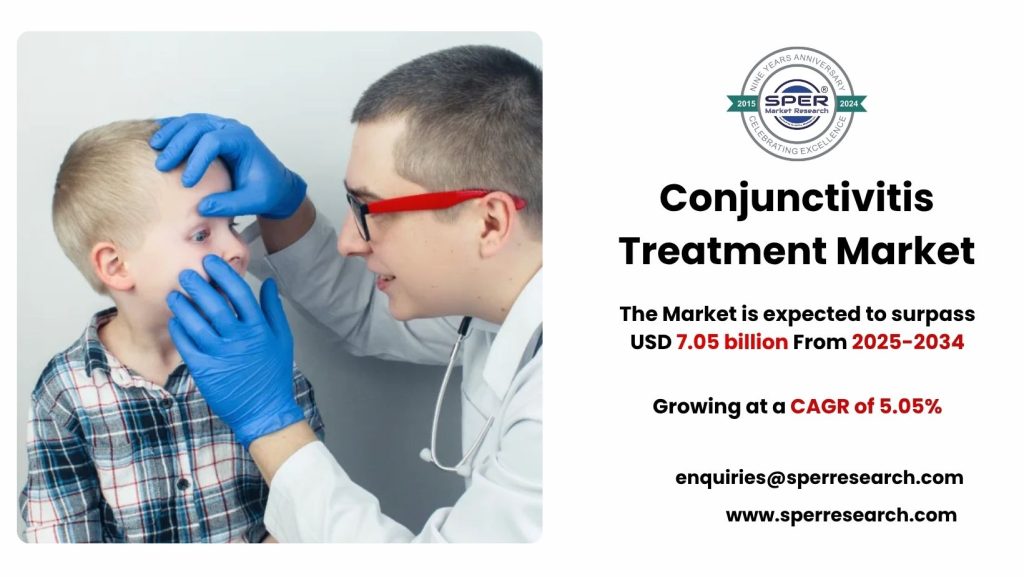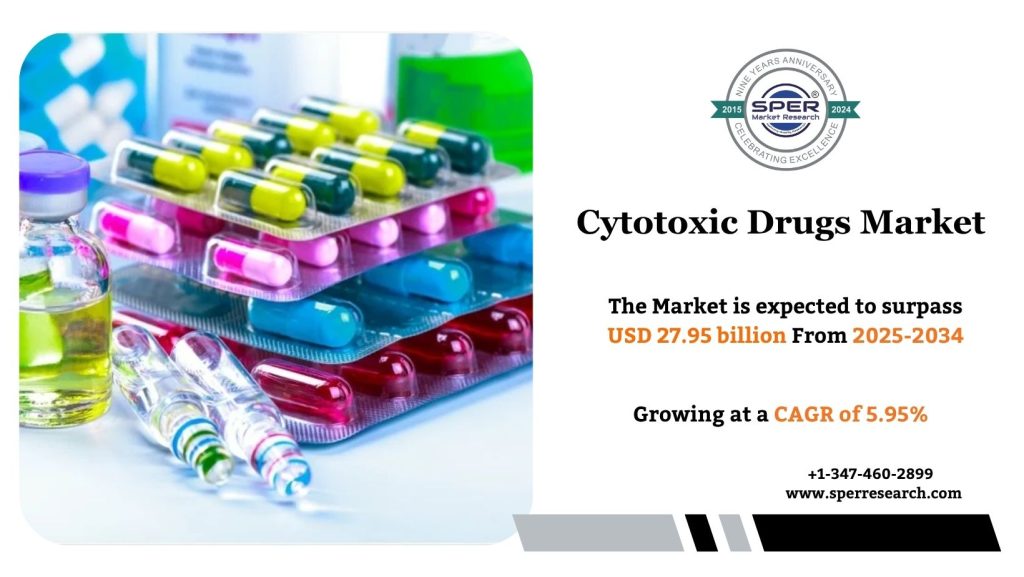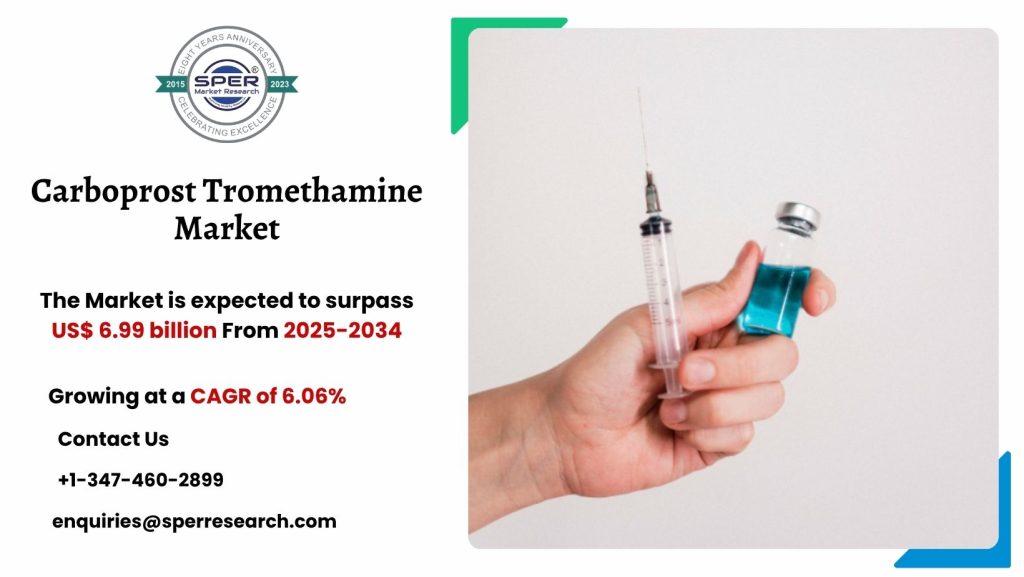The purpose of anti-pollution nasal spray is to shield the nasal passages from dangerous airborne contaminants. Usually designed to establish a barrier within the nose, these sprays aid in keeping pollutants like smoke, smog, dust, pollen, and other tiny irritants out of the respiratory system. They are used to reduce the negative effects of environmental pollutants on respiratory and nasal health. In humans, the first line of protection against airborne particles is the nasal cavity. However, in very polluted situations, the nose’s inherent filtration ability may be overtaxed. By hydrating the nasal membranes, capturing dangerous particles, and in certain situations, actively rejecting pollutants, anti-pollution nasal sprays strengthen this natural defense.
According to SPER market research, ‘Global Anti-Pollution Nasal Spray Market Size- By Product, By Distribution Channel – Regional Outlook, Competitive Strategies and Segment Forecast to 2034’ state that the Global Anti-Pollution Nasal Spray Market is predicted to reach 11.66 billion by 2034 with a CAGR of 5.86%.
Drivers:
Several major factors are driving the enormous rise of the global market for anti-pollution nasal sprays. Air pollution has increased due to increased urbanization and industry, which has led to an increase in respiratory conditions such asthma, sinusitis, and allergic rhinitis. Because of these health issues, people are looking for ways to avoid them, such as using anti-pollution nasal sprays. The demand for these products is also being driven by growing awareness of how air pollution harms respiratory health. People who want to protect themselves from airborne pollution find over-the-counter nasal sprays to be a convenient and accessible choice.
Request a Free Sample Report: https://www.sperresearch.com/report-store/anti-pollution-nasal-spray-market?sample=1
Restraints:
There are various obstacles that could affect the growth trajectory of the worldwide anti-pollution nasal spray market. Lack of regulatory consistency in product compositions is a major limitation. Customers may become distrustful of inconsistent quality, which could impede market expansion. The establishment of thorough regulations for nasal cleaning products is still ongoing, which has an impact on market entry plans and product introductions. Smaller businesses may find it difficult to stay profitable as a result of price wars brought on by this rivalry. The idea that nasal cleaning products are reserved for those who already have a condition could restrict market growth because preventive use is frequently disregarded. North America dominates the global anti-pollution nasal spray market, due to growing awareness of nose health, formulation developments, and the increasing incidence of respiratory disorders are the main drivers of the North American market. Some of the key market players are Aurena Laboratories AB, Church & Dwight Co., Inc., GSK plc, Haleon plc, Himalaya Wellness Company, and others.
For More Information, refer to below link: –
Anti-Pollution Nasal Spray Market Share
Related Reports:
Neutropenia Treatment Market Growth
Canine Arthritis Treatment Market Growth
Follow Us –
LinkedIn | Instagram | Facebook | Twitter
Contact Us:
Sara Lopes, Business Consultant — USA
SPER Market Research
enquiries@sperresearch.com
+1–347–460–2899
